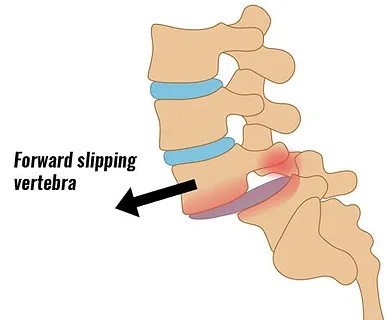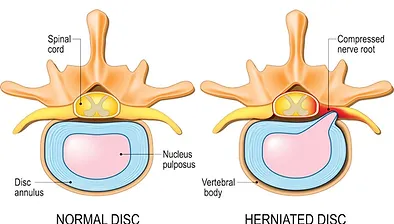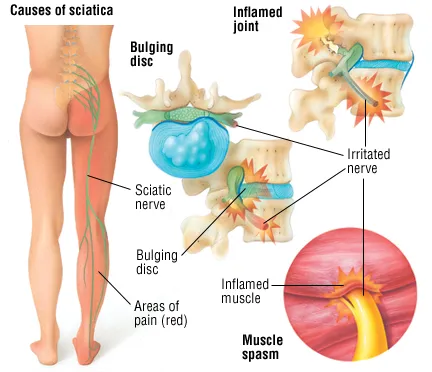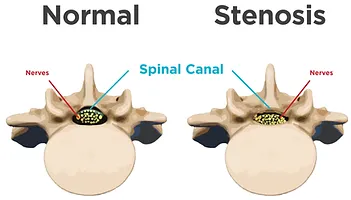It is estimated that 80% of people will experience low back pain in their lifetime (Rubin, 2007). Back pain is the leading cause of disability world wide and restricts people from engaging in work as well as everyday activities (Hoy et al., 2010).
There are numerous causes of low back pain, ranging from acute to chronic and everything in between. Causes include: Acute injury (car accident), Repetitive Strain, Disc buldge & Herniation, Sports Injury, Arthritis, Sciatica, Muscle & Ligament Strains, Muscular Imbalances and many more!
The most important aspect is identifying the correct cause of your low back pain so that you receive the correct treatment.

Facet joints are comprised of the small bony projections that form the joints between your vertabrae. These joints are responsible for guiding and movements between the vertabrae.
Facet joints are highly innervated and thus can become very painful when dysfunction occurs. This includes; Locked Facet Joint, Facet Joint Osteophytes (bone spurs), Muscle Spasms, Vertebral Ligament Injury.

Spondylolisthesis refers to the sliding of the vertebral body in relation to an adjacent vertebra. The sliding my be in a forward direction (Anteriorlisthesis), backward (Retrolisthesis) or sidewards (Laterolisthesis).
This can occur as a result of structural changes (Spondylolysis or Fracture), degenerative changes or disc injury. Symptoms may only appear after an extended time, meaning you could have this condition without realising.
Symptoms include radiating pain in the low back that spreads to the buttocks and back of thighs, back stiffness, worsen with activity and improve with rest.


Disc Herniation occurs when the jelly-like centre of the disc (nucleus) pushes out against the outer ring (annulus) causing the disc to buldge outwards. Sometimes the nucleus can squeeze all the way through the annulus. As the herniated disc buldges out towards the spinal cord, it outs pressure on the nerves causing pain.
Disc Degeneration is when the discs shrink and wear away over time. This can be a result of ‘wear and tear’ and previous disc injury. Other dysfunction can attribute to this, such as an Endplate fracture where the disc seeps in fracture space of the vertebrae.
It is thought that the pain associated with this condition is a result of the inflammation and micro-instability of the affected discs as well as muscle spasms that occur due to the change in the altered biomechanics of the spine.

Strictly speaking, sciatica is a symptom and not a diagnosis. It describes the pain experienced along the sciatic nerve, which originates in your lower back and run down through your buttocks, down the back of the leg.
Sciatica pain is a result of the nerve being aggravated. This can be cause by a variety of conditions or dysfunction, including; Joint Inflammation, Locked Facet Joint, Disc Herniation, Arthritic Bone growths.
Sciatica pain usually starts in the low back and spreads down through the buttock, leg, calf and occasionally into the foot. The pain can vary between sharp shooting pains or dull aching, burning pain. Tingling, numbness or muscle weakness in the affected leg can also be present with sciatica.
Piriformis Syndrome can also cause these types of symptoms and pain. This is where the Sciatic nerve is being compressed as it moves underneath the Piriformis muscle (in some people, the Sciatic nerve actully runs through the muscle belly of the Piriformis muscle).

Stenosis is a condition in which the there is reduced space in the spinal canal for nerves and other strucutre to pass through. There are several reasons that cause this narrowing or reduction on the spinal canal.
Stenosis can cause various issues, including;
Disc Herniation occurs when the jelly-like centre of the disc (nucleus) pushes out against the outer ring (annulus) causing the disc to buldge outwards. Sometimes the nucleus can squeeze all the way through the annulus. As the herniated disc buldges out towards the spinal cord, it outs pressure on the nerves causing pain.
Disc Degeneration is when the discs shrink and wear away over time. This can be a result of ‘wear and tear’ and previous disc injury. Other dysfunction can attribute to this, such as an Endplate fracture where the disc seeps in fracture space of the vertebrae.
It is thought that the pain associated with this condition is a result of the inflammation and micro-instability of the affected discs as well as muscle spasms that occur due to the change in the altered biomechanics of the spine.

References
Rubin Dl. Epidemiology and Risk Factors for Spine Pain. Neurol Clin. 2007; May;25(2):353-71.
Hoy D, March L, Brooks P, et al The global burden of low back pain: estimates from the Global Burden of Disease 2010 study Annals of the Rheumatic Diseases Published Online First: 24 March 2014. doi: 10.1136/annrheumdis-2013-204428